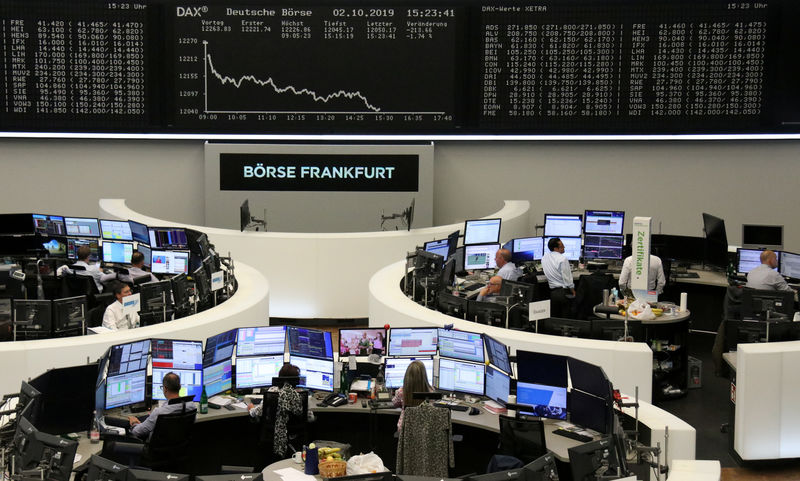
British Petroleum (BP) Chief Executive Bob Dudley (R) participates to a conference during the event "Tomorrow in Motion" on October 1st, 2018 on the eve of the first press day of the Paris Motor Show.
ERIC PIERMONT | AFP | Getty Images
BP chief executive Bob Dudley will step down from his current role at the end of March next year, the energy giant announced Friday.
Dudley, who has worked with BP for 40 years and held the position of CEO for almost a decade, will be replaced by BP's current upstream chief executive, Bernard Looney.
The FTSE 100 giant said in a press release that Dudley, who is 64 years old, has decided to step down from his role following the delivery of the firm's 2019 full-year results on February 4, 2020. He will then retire on March 31 later that year.
Looney, 49, will continue with his current role until February 5, at which point he will take the reins from Dudley and join the BP board.
Shares of BP traded up almost 1% on the news.
"It has been the privilege of a lifetime to serve this company and work in this industry for the past four decades. I have worked with so many committed people from all over the world — both inside and outside BP — and I am enormously proud of all the things we have achieved together to provide energy for the world," Dudley said in a statement on Friday.
"Bernard (Looney) is a terrific choice to lead the company next. He knows BP and our industry as well as anyone but is creative and not bound by traditional ways of working. I have no doubt that he will thoughtfully lead BP through the transition to a low carbon future," he added.
'Challenging time'
Dudley took over as CEO of BP on October 1, 2010 in the wake of the biggest oil spill in U.S. history. The Deepwater Horizon catastrophe killed 11 people and threatened the company's existence.
His job was to try to restore the company to a position it held before the explosion, managing the company's balance sheet as it faced billions of dollars worth of penalties and clean-up costs.
"Bob has dedicated his whole career to the service of this industry. He was appointed chief executive at probably the most challenging time in BP's history," BP Chairman Helge Lund said in a statement.
"During his tenure he has led the recovery from the Deepwater Horizon accident, rebuilt BP as a stronger, safer company and helped it re-earn its position as one of the leaders of the energy sector. This company — and indeed the whole industry — owes him a debt of gratitude," Lund said.
A BP company logo is displayed on a fuel pump on the forecourt of a gas station operated by BP Plc in London, U.K.
Chris Ratcliffe | Bloomberg | Getty Images
The BP CEO also faced a historic collapse in oil prices in 2014, with the downturn in crude futures ultimately forcing BP to pull back on capital spending plans and delay investment projects.
More recently, BP agreed to a request from shareholders in May for greater detail and transparency on how each capital investment decision would align with the Paris climate agreement — an international accord that seeks to limit global warming to less than 2 degrees Celsius.
Last month, Dudley said BP would sell some of its most carbon-intensive projects and reduce investment in others to try to improve the firm's environmental footprint.
The energy giant has been targeted by climate activist groups on numerous occasions in recent months, with demonstrators increasingly angry about the lack of progress toward a lower-carbon future.
Shares of BP have increased by about 10% since Dudley came to the helm.
Who is Bernard Looney?
Looney has run BP's upstream business since April 2016 and has been a member of the firm's executive management team since November 2010.
BP's upstream segment includes 17,000 people operating across almost 30 countries and produces around 2.6 million barrels equivalent of oil and gas a day.
An Irish citizen, Looney joined BP in 1991 as a drilling engineer and worked in operational roles in the North Sea, Vietnam and the Gulf of Mexico.
"It has been a great pleasure to work with Bob and it is an honor to succeed him as chief executive. I am humbled by the responsibility that is being entrusted to me by the board and am truly excited about both the role and BP's future," Looney said.
"Our company has amazing people, tremendous assets, and a set of core values that guide our actions, but most of all we have a desire to be better. I look forward to tapping into that desire and building on the strong foundation that Bob has built as we meet society's demand for cleaner, better energy."
https://www.cnbc.com/2019/10/04/bp-ceo-bob-dudley-to-step-down-bernard-looney-will-succeed.html
2019-10-04 05:42:57Z
CAIiEOKZl0dXsrYAadCsZG-lfK0qGQgEKhAIACoHCAow2Nb3CjDivdcCMOryngY



